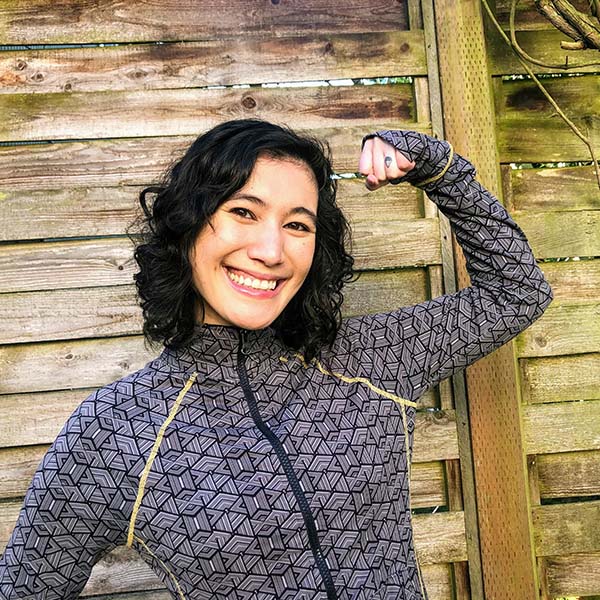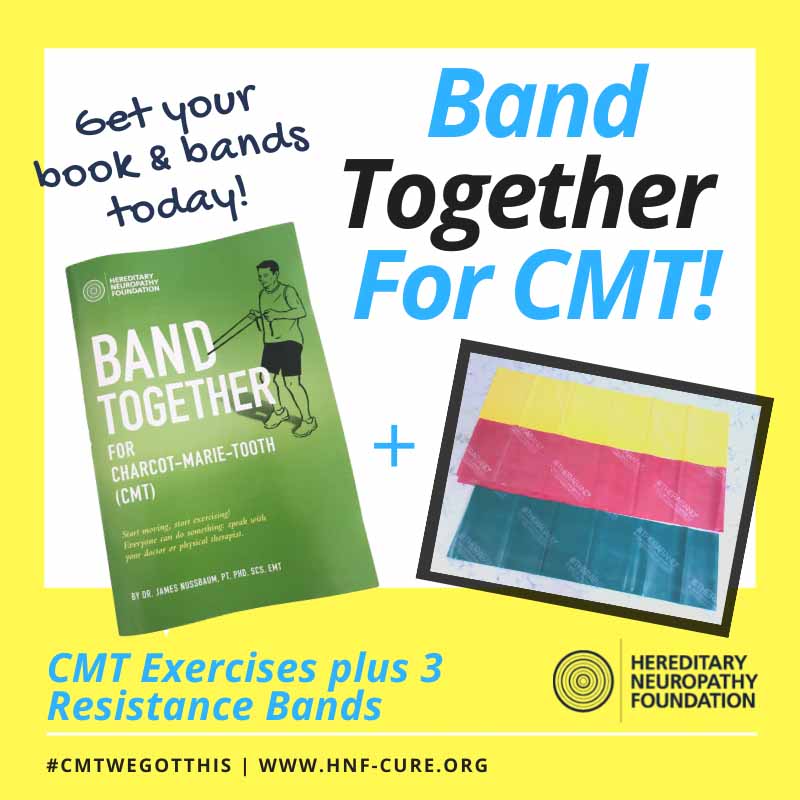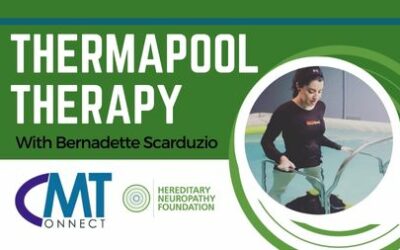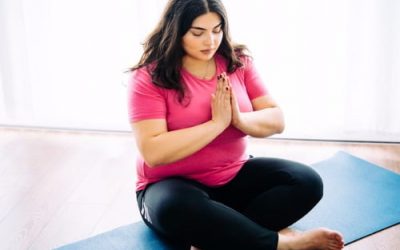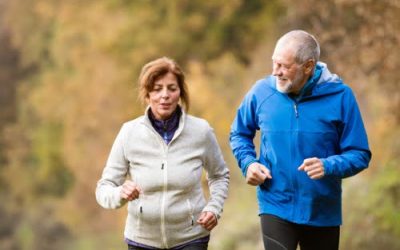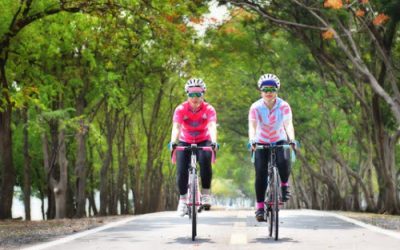The Hereditary Neuropathy Foundation believes that Physical Therapy (PT) and physical activity plays an essential role in physical and mental well being, especially for people affected by debilitating diseases like Charcot-Marie-Tooth.
Movement is Medicine™
The mission is to promote the safe adoption of a more active lifestyle through exercise and nutrition programs specifically created for those with disabilities.
Virtual CMT-Friendly Exercise Classes on Movement is Medicine™
LIVE & Recorded classes every month!
Physical Therapists
Physical therapists (PT) are specialists in helping people move and gain or maintain a healthy, active lifestyle. PT is especially an important modality to support CMT patients to help minimize pain, improve strength, balance and sensation with a goal to help maintain and to restore mobility.
Children
If your son or daughter has CMT you would want to consult a physical therapist who is a pediatric clinical specialist (PCS).
Adults
As an adult with CMT, an orthopedic clinical specialist (OCS) or a neurologic clinical specialist (NCS) might both be helpful depending on their clinical experience with people with CMT and/or other progressive muscle diseases.
You can help!
Tell us about your experience with PT & Exercise.
Band Together For CMT
Helping CMT patients get and stay physically active.
“Start where you are. Use what you have. Do what you can.”
– Arthur Ashe
Resistance bands are a great place to start towards a better and stronger you!
Build strength while boosting stamina, flexibility, range of motion and more!
Get your exclusive guide book of CMT-specific exercises plus 3 bands with every $25 donation.
Let’s Band Together for CMT today!
More on Physical Therapy
Contracture Management
CMT patients often develop foot and hand deformities. It is important to prevent or slow down development of contractures (loss of motion of your joints due to the shortening of muscles, ligaments or other tissues around the joints), especially for the joints in your hands and feet as they significantly complicate shoe wear, walking and dressing.
Physical therapists can help by teaching you how to perform daily range of motion exercises or using positioning to slow the progression of loss of motion. They will work closely with Occupational Therapists to help you maintain strength, motion and function in your hands. For your feet and ankles, they work closely with the orthotist (brace maker) or the orthopedic surgeon if exercise and positioning are not enough and surgery is needed.
Proprioception
Sensory changes in your feet may make walking and balance more difficult, and it is important to understand how to manage your daily activities within the limits of impaired sensation.
Learning to use your vision to substitute for missing sensation in your feet can improve balance and help decrease falls. A physical therapist can develop an individualized program to address these issues.
Endurance
It is important for everyone to perform an adequate amount of physical activity every day. The Department of Public Health recommends at least 30 minutes of daily activity, such as walking, swimming, cycling or other recreational activity. For children, 60 minutes daily is recommended.
Physical therapists teach you how to safely participate in the kinds of physical activities you enjoy so you get enough exercise to maintain an optimal level of endurance and fitness. They collaborate with personal trainers and other fitness instructors so that you can safely use weight training equipment, treadmills or other gym equipment.
Assistive devices
There are numerous assistive devices that can be used to improve your balance and decrease fatigue while walking. Assistive devices such as braces and crutches or canes increase your ability to walk with a reduced risk of falling and fatigue from weakened foot or leg muscles. The PT can ensure what devices fit you well and that you have the information you need to decide which device is best for you. They will also assist with the fitting and use of wheelchairs or scooters for longer distance transportation should that become necessary.
Bracing & AFOs
Many CMT patients consequently need to wear special footwear, foot orthoses and ankle-foot orthoses (AFOs) to maintain independent ambulation. But there are a variety of braces available for ankles, knees, feet, hands, and other areas weakened by CMT. Even your neck and spine can be braced. For many with CMT, braces can bring newfound ability to walk quickly and smoothly and provide greater independence in everyday activities.
Learn more about Bracing here.
Pain
Sometimes people with CMT will have pain from overuse or from altered activity patterns caused by muscle weakness or contractures. Physical therapy offers many techniques for reducing pain without medication. For more information see Pain & CMT.
Other Resources
- AdventHealth
- To find a licensed health care professional visit the APTA.
Thermapool Therapy
Therma Pool therapy session and demo as they discuss the benefits of aquatic exercise for CMT and more!
How Yoga Can Help Charcot-Marie-Tooth Patients
Could yoga help CMT patients manage their symptoms?
Physical Therapy For Children With Charcot-Marie-Tooth Disease
Children with CMT who are struggling with the activities of daily living may greatly benefit from a physical therapy program.
How Alter-g Works
Using “unweighting technology”, the Alter-G makes you feel up to 80 percent lighter—so if you weigh 100 pounds, you could feel as light as 20 pounds on the treadmill.
CMT and Exercise
HNF wants to help our Inspire members get answers to questions related to Charcot-Marie-Tooth.
Muscle Matters: Exercise And Charcot-Marie-Tooth Disease
Exercise has the potential to improve functional ability, independence, and quality-of-life for CMT patients.
A Bi-Directional, Translational Model of Resistance-Type Exercise Training in the Management of Charcot-Marie-Tooth (CMT) Disease
A team of government researchers, including Dr. Robert Chetlin, have collaborated with Dr. Michael Sereda and Dr. Klaus Nave of the Max Planck Institute for Experimental Medicine (MPI) to successfully secure the CMT1A transgenic rat from MPI and establish a colony in the United States.
Coaching Athletes with Charcot-Marie-Tooth
Morgan Johnson doesn’t have Charcot-Marie-Tooth, but she is quickly learning everything she can about it. Born and raised near the coast in Galveston, Texas, Morgan, 26, has been a competitive runner and swimmer since she was little. Four years ago, she began participating in triathlons. In 2009, as an undergrad at the University of North Texas, Morgan and her partner, Sean Thompson started a Youth Triathlon Team for 7-14 year olds. Known as the North TX Tri Team, they have remained together and still compete.
United Nations Stresses Exercise for Noncommunicable Diseases like Charcot-Marie-Tooth
The U.N. General Assembly has unanimously agreed to work toward curbing the risk factors of noncommunicable diseases(NCDs), including the four most common: diabetes, cardiovascular diseases, cancers and chronic respiratory diseases. Sedentary lifestyle, smoking, alcohol abuse and poor diet have been cited as the major risk factors to developing NCDs
Exercise for people with CMT: Frequently Asked Questions Q & A Dr. Robert Chetlin
We answer the most frequently asked questions about exercise for people with CMT.



